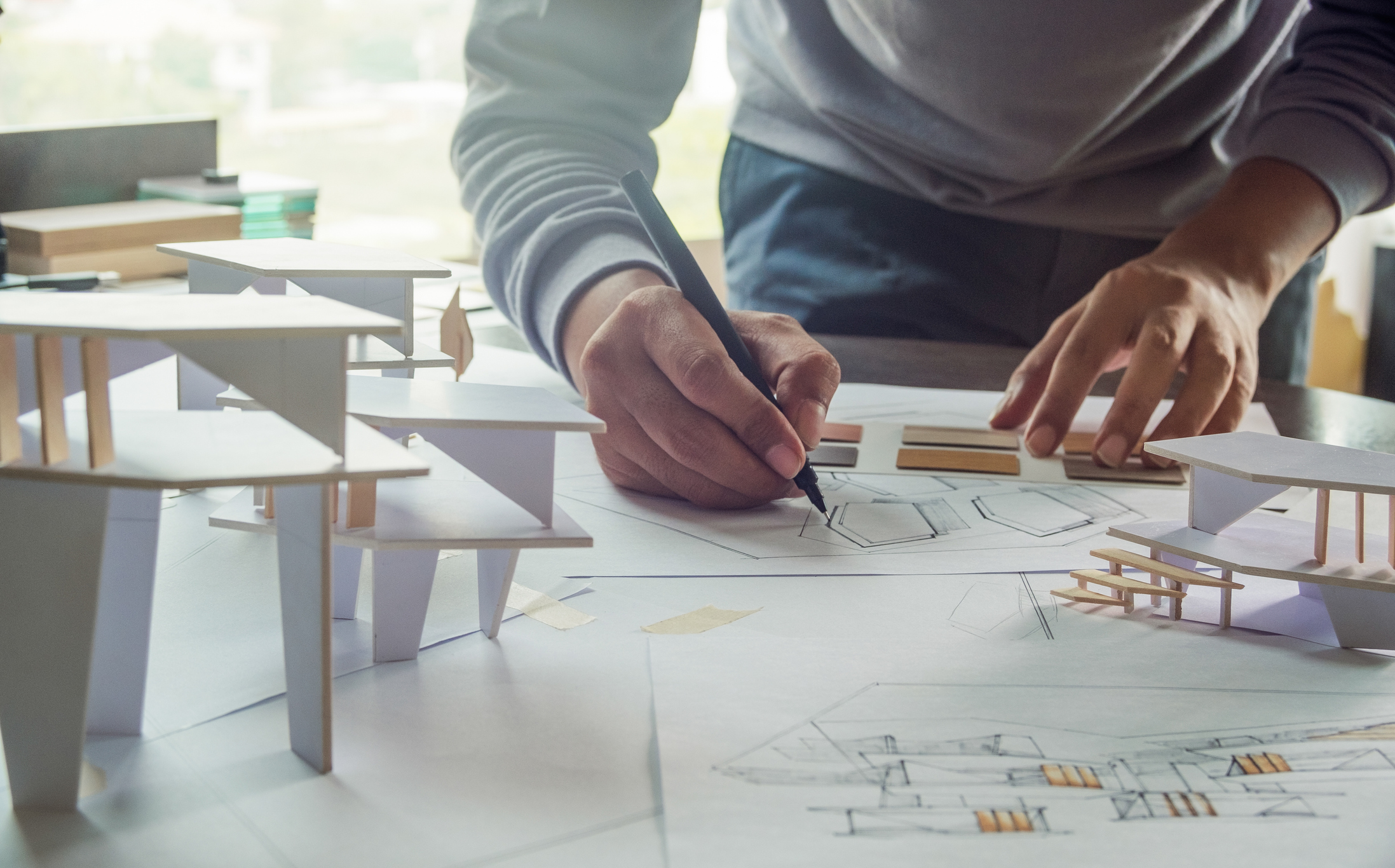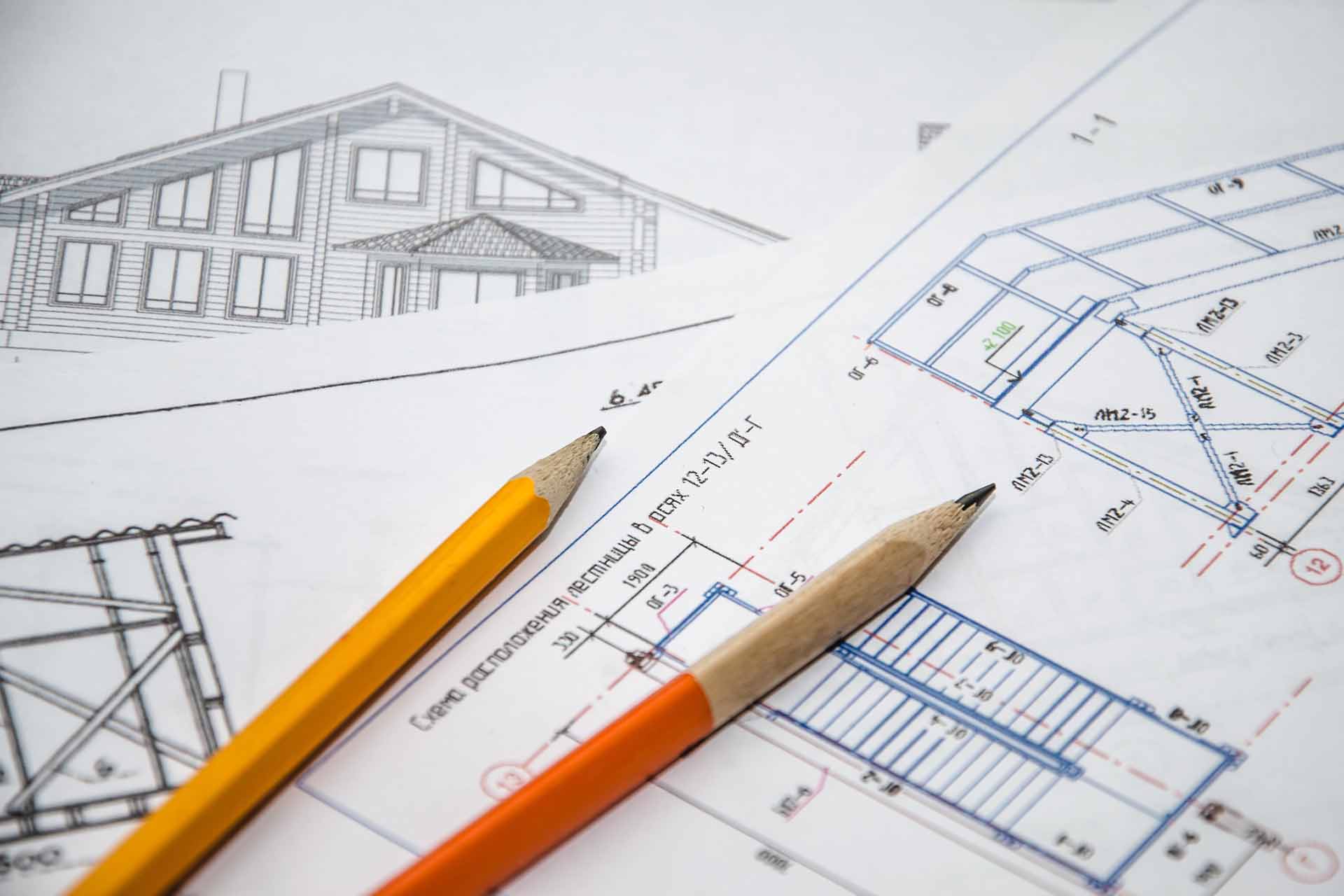Architect Interview Questions You Should Be Prepared to Answer
Architect Interview Questions You Should Be Prepared to Answer
Blog Article
Understanding the Diverse Job Paths Available for Aspiring Architect
As a hopeful Architect, you have a world of job courses waiting for you. Each course supplies one-of-a-kind obstacles and chances to apply your imagination and technical knowledge. Whether you're drawn to standard design or the subtleties of lasting style, there's a niche that lines up with your interests. Understanding these diverse choices can form your expert journey, but which direction will you choose to discover initially?
Standard Architecture: Creating Structures and structures
Traditional design concentrates on making buildings and structures that blend functionality with visual allure. As you discover this field, you'll appreciate the intricate balance in between type and objective. You'll find out to draw inspiration from historical designs, integrating components like symmetry, products, and craftsmanship. Your designs can mirror cultural heritage, showcasing neighborhood customs while meeting modern requirements.
You'll establish abilities in composing, model-making, and website analysis, permitting you to envision and interact your concepts efficiently. Engaging with customers, you'll require to understand their vision and equate it right into viable styles.
Furthermore, constructing codes and sustainability techniques are important in your job, ensuring your structures are secure and eco-friendly. As you grow in your career, you'll locate possibilities in residential, commercial, and even restoration projects, each offering special challenges. Embracing typical architecture leads the way for a satisfying job that admires the past while shaping the future.
Urban Planning: Shaping Areas and Public Spaces
As an aspiring Architect, you can play a necessary role as an urban coordinator, changing how areas operate and connect. By using area interaction strategies, you'll assure that citizens have a voice fit their atmosphere. And also, integrating sustainable style concepts will certainly aid create rooms that not only meet today's requirements however additionally secure the future.
Duty of Urban Planners
While numerous might think of designers as the single enthusiasts behind structures, metropolitan organizers play an important role in forming the wider landscape of areas and public areas. By working together with different stakeholders, you'll help design parks, transportation systems, and household locations that advertise social communication and accessibility. Your competence in spatial layout and community characteristics permits you to visualize future development while protecting cultural heritage.
Neighborhood Interaction Techniques
Effective neighborhood involvement techniques are vital for city coordinators to assure that the voices of citizens are listened to and valued in the planning process. To foster meaningful discussion, you need to prioritize open forums and workshops where area members can reveal their ideas and worries. By actively paying attention and incorporating responses, you'll develop rooms that mirror the community's needs, inevitably leading to even more effective and sustainable city environments.
Lasting Style Principles
When designing urban rooms, including lasting style concepts is important for creating environments that prosper both environmentally and socially. You ought to start by concentrating on energy efficiency, using products that decrease waste and promote recycling. Consider incorporating green rooms, like parks and yards, to improve biodiversity and improve air high quality. Advertising walkability and public transportation can decrease dependence on cars and trucks, promoting a much healthier community.
Designing with water conservation in mind is likewise crucial-- believe concerning rainfall yards and permeable surface areas to take care of stormwater. Entailing community members during the planning process assurances that the spaces you produce fulfill their demands and motivate social interaction. By welcoming these concepts, you'll contribute to vivid, sustainable metropolitan landscapes that profit everyone.

Landscape Architecture: Creating Lasting Outside Environments
As you discover landscape architecture, you'll find crucial layout principles that develop useful and stunning outdoor rooms. Lasting methods play a vital role in making certain these settings grow while reducing ecological impact. Plus, you'll locate a range of job opportunities that allow you to make a genuine difference in just how people connect with nature.
Design Concepts in Landscape
Understanding design concepts in landscape architecture is vital for creating lasting exterior atmospheres that harmonize with nature. You'll need to ponder elements like balance, scale, and proportion to assure your designs really feel natural and inviting. In addition, pay focus to seasonal changes, creating with products that enhance the surroundings year-round.
Lasting Practices Overview
Lasting practices in landscape architecture not only focus on aesthetics but also prioritize eco-friendly health and wellness and resource preservation. You can create areas that advertise dirt health and wellness, such as exercising and using natural products permaculture principles. Ultimately, these methods guarantee your styles profit both individuals and the atmosphere for years to come.
Profession Opportunities Expedition
With a solid foundation in sustainable techniques, landscape architecture supplies a range of job courses that enable you to make a purposeful impact on the environment. You might work as a landscape designer, producing cosmetically pleasing and practical outdoor spaces, or concentrate on eco-friendly restoration, aiding to restore damaged communities. Urban planners usually team up with landscape designers to produce environment-friendly spaces in city setups, improving city livability. If you're passionate concerning education and learning, consider coming to be a landscape design instructor, motivating future generations. Additionally, you may function with nonprofits concentrated on environmental sustainability or participate in study to innovate brand-new methods. Each path not just shapes lovely settings yet likewise promotes a much healthier planet for future generations.
Sustainable Style: Concentrating on Eco-Friendly Practices
As you explore your occupation in architecture, welcoming green methods can set you apart in a competitive area. Sustainable style concentrates on producing structures that reduce ecological effect while enhancing owner wellness. By integrating eco-friendly materials, energy-efficient systems, and sustainable building strategies, you'll add to a here greener future.
Begin by acquiring expertise of green certifications like LEED or BREEAM, which can boost your qualifications. Consider exactly how all-natural light, air flow, and thermal efficiency more info can enhance layout. Collaborate with engineers and ecological consultants to innovate options that lower waste and save sources.
Don't forget the relevance of community participation-- interesting regional stakeholders can inspire designs that integrate with the environment. As clients progressively focus on sustainability, your knowledge in green practices will certainly not just bring in tasks but also satisfy your enthusiasm for accountable design. Accept this critical aspect of the profession, and watch your profession thrive.
Historical Conservation: Protecting and Restoring Cultural Heritage
While you start on your architectural trip, think about the essential role of historical preservation in preserving our social heritage. This field concentrates on the protection and reconstruction of considerable structures, sites, and frameworks that tell the tales of our past. By participating in historical preservation, you'll help guard the architectural heritage that forms area identification.
As a historic conservation Architect, you'll analyze historic relevance and assess the problem of frameworks. You'll work very closely with conservationists and historians to guarantee genuine reconstruction strategies are utilized. This profession path enables you to blend creative thinking with research, allowing you to develop solutions that value original products and craftsmanship.
Your job not just contributes to sustainability by recycling existing buildings however likewise fosters a feeling of pride within areas. Embracing this course will certainly assist you become a guardian of history, preserving the tales and aesthetic appeals that enrich our lives.
Interior Style: Enhancing Indoor Spaces
Historic conservation and interior design both share a dedication to enhancing the developed setting, but they concentrate on various aspects. While historical conservation highlights keeping a structure's social and historical worth, indoor design absolutely nos in on check here maximizing interior rooms for capability and aesthetic appeals.
As a hopeful Architect, you'll discover that interior design allows you to blend creative thinking with technological skills. You'll design areas that not just look excellent however additionally promote convenience and efficiency. This area entails comprehending how light, shade, and products communicate within a space, impacting mood and functionality.
You'll service numerous tasks, from domestic homes to business workplaces, making sure that each environment satisfies the demands of its owners. By prioritizing individual experience, you can change interiors right into motivating and practical spaces, making a substantial effect on how individuals engage with their environments. Accept the possibility to improve indoor atmospheres and form the method people live and function.
Industrial Layout: Merging Capability With Aesthetics
Commercial layout plays an important role in developing products that effortlessly blend aesthetic appeals with functionality, making certain that what you make use of daily is not only aesthetically attractive yet additionally practical. As an ambitious Architect, you could involve yourself in this field, concentrating on creating whatever from furniture to customer electronics. Your work involves understanding user requirements, materials, and making processes, enabling you to produce cutting-edge solutions that boost day-to-day experiences.
In industrial layout, you'll commonly team up with suppliers, designers, and online marketers, making sure that your layouts are not just attractive yet additionally possible. You'll find out to stabilize type and feature, prioritizing functionality without giving up design. By developing your abilities in sketching, 3D modeling, and prototyping, you'll be well-appointed to bring your ideas to life. This profession course offers a dynamic atmosphere where creative thinking meets functionality, making it a fulfilling choice for designers thinking about forming the items of tomorrow.
Frequently Asked Inquiries
What Educational Qualifications Do I Required to End Up Being a Designer?
To become an engineer, you'll require an expert degree in architecture, generally a Bachelor's or Master's. Additionally, you'll have to complete an internship and pass the Architect Enrollment Examination to practice legally.
Are There Qualification Requirements for Different Architectural Profession Paths?
Yes, there're accreditation requirements for various architectural paths. Architect. You'll need to pass tests, full internships, and in some cases go after specialized training, depending upon your selected emphasis, like landscape architecture, metropolitan style, or historical conservation
What Software Application Abilities Are Necessary for Architects Today?

How Can I Gain Practical Experience While Researching Style?
You can gain useful experience by interning at building firms, joining style competitors, offering for neighborhood projects, or teaming up with classmates on real-world assignments. These chances improve your skills and build useful links in the sector.
What Job Opportunities Exist Outside Typical Style Firms?
You can explore different job opportunities outside traditional style companies, like metropolitan preparation, interior decoration, landscape style, building administration, realty development, and even duties in sustainability consulting. Each deals one-of-a-kind difficulties and rewards.
Whether you're drawn to standard design or the nuances of sustainable layout, there's a specific niche that aligns with your passions.When developing urban spaces, including sustainable layout concepts is important for developing atmospheres that flourish both environmentally and socially.As you check out landscape design, you'll uncover essential design concepts that develop functional and gorgeous outside areas.Understanding design concepts in landscape design is important for producing lasting exterior environments that integrate with nature.In industrial layout, you'll usually collaborate with marketing professionals, makers, and designers, ensuring that your layouts are not just stunning yet likewise practical.
Report this page